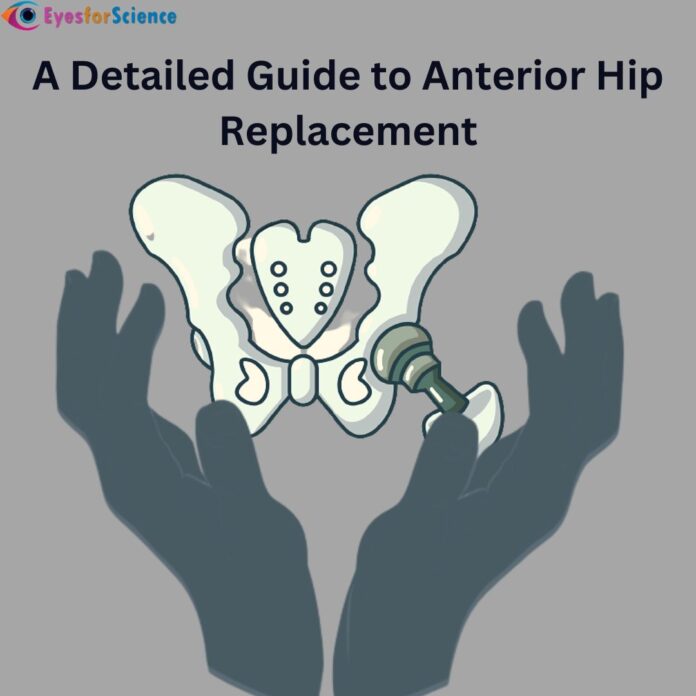What is Anterior Hip Replacement Surgery?
Anterior hip replacement is a surgical technique that aims at removing the damaged hip joint and placing a hip implant or hip prosthesis instead. It is a type of minimally invasive hip arthroplasty or muscle-sparing hip arthroplasty. This surgery follows a minimally invasive approach to replacing the joint. Many other hip replacement techniques are there but the anterior approach is the choice of most surgeons.
Hip replacement is one of the common joint replacement surgeries. Elderlies are the ideal candidates for this procedure whereas, adults may also require this in certain conditions. A high-energy trauma that injures the hip joint badly is the commonest reason why adults may require hip replacement surgery.
What is the Procedure for Anterior Hip Replacement?
The surgery requires a small incision on the front of the hip to access and operate the joint. The surgery also requires anesthesia to keep the patient unconscious during the procedure. This technique is quite opposite from the traditional hip replacement surgeries where the surgeon makes a large incision at the back of the hip. Another point to focus on with anterior hip replacement is that the surgeon need not cut and reattach muscles. This is because the surgeon can access the joint just by moving the muscles aside gently. After this, the surgeon will remove the damaged joint and place a hip prosthesis. Before closing the incision, the surgeon will move the muscles and tendons back to their respective places.
Who Requires Anterior Hip Replacement?
The surgery improves the function and range of motion of the affected hip joint while relieving associated symptoms. So, the one with a damaged hip joint is an ideal candidate for this procedure.
People suffering from hip arthritis most require anterior hip replacements. Besides this, other conditions affecting the hip joint may also need anterior hip surgery for treatment. Some of those conditions may include fracture, osteoarthritis, rheumatoid arthritis, and osteomyelitis. Above all, the surgery may also fix the hip that has been replaced earlier.
Not all candidates with hip joint problems are ideal for an anterior hip replacement, some may need other hip replacement techniques.
What Recovery is Like After Anterior Hip Replacement?
In most cases, the patient can go home the same day of the surgery, especially when it is performed as an outpatient surgery.
Being a minimally invasive surgery, the recovery after anterior hip replacement is quicker when compared to other techniques. The patient does require targeted physical therapy to regain strength and the range of motion of the joint. One can start walking using assistive devices like walkers or crutches the next day after surgery.
It might take 4 to 6 weeks to return to normal activity like before surgery. Although, it also depends on individual to individual and the severity of the damage treated.

What Are the Advantages of Anterior Hip Replacement?
The benefits of this type of surgery may include:
Smaller Incision
It is a minimally invasive surgical technique and hence, the surgeon makes a small incision to access the joint. This surgery also results in lesser post-surgical pain. Hence, requires fewer pain medicines.
Less Muscle Damage
This surgical technique does not require cutting and reattaching of muscles and tendons. As a result, muscle damage will be lesser than that occurs in traditional hip replacement.
Better Joint Stability
As surgery does not require cutting of muscles, this ensures better stability after the surgery.
Faster Recovery
It is noticed that people after anterior hip replacement tend to return to normal activities around a week earlier when compared to those with traditional surgeries. Less muscle damage and better stability after this surgery may be one of the reasons for this.
Short Hospital Stay
In most cases, the surgery is performed as an outpatient procedure and hence, patients can go home the same day after surgery.
Can Use All Types of Implants
Another key advantage of the procedure is that there is no limitation on what type of hip implants should be used.
Fewer Post-Surgical Precautions
After hip replacement surgery, the healthcare service provider gives a list of dos and don’ts to the patient. This is to eliminate the risk of severe post-surgical complications. In the case of the anterior approach, the list is smaller as fewer precautions are there.
Must Read – The Benefits of Physical Therapy.
What Are the Disadvantages of Anterior Hip Replacement?
There are a few limitations to anterior hip replacement surgery as well:
Problems with Wound Healing
Research has found that there may be issues with wound healing in people who have undergone anterior hip surgery. In most cases, mild and self-limiting wound healing is there but in some, an infection may involve. An infection can pose a serious risk to the joint.
Obese and Highly Muscular People are not the Right Candidates
The surgery is not ideal in those who are obese and have high muscle mass. This is because it will be difficult for the surgeon to access the joint if more than normal soft tissues are there.
Demands Technical Expertise
Anterior hip surgery provides a restricted view of the hip joint. Hence, it requires special technical expertise to operate the joint with a restricted view. Only specialists with proper knowledge can perform this surgery and finding one will not be easy.








